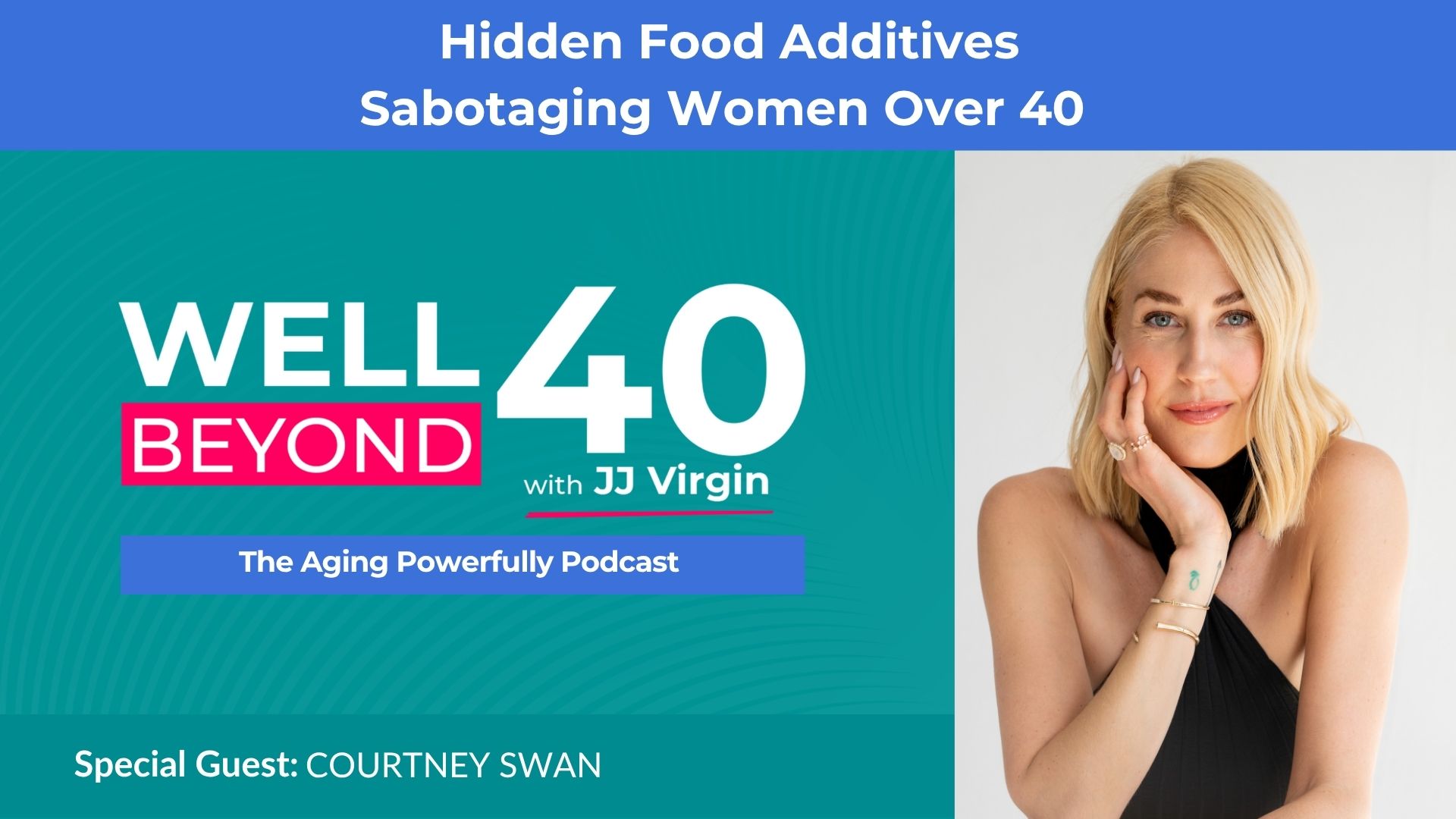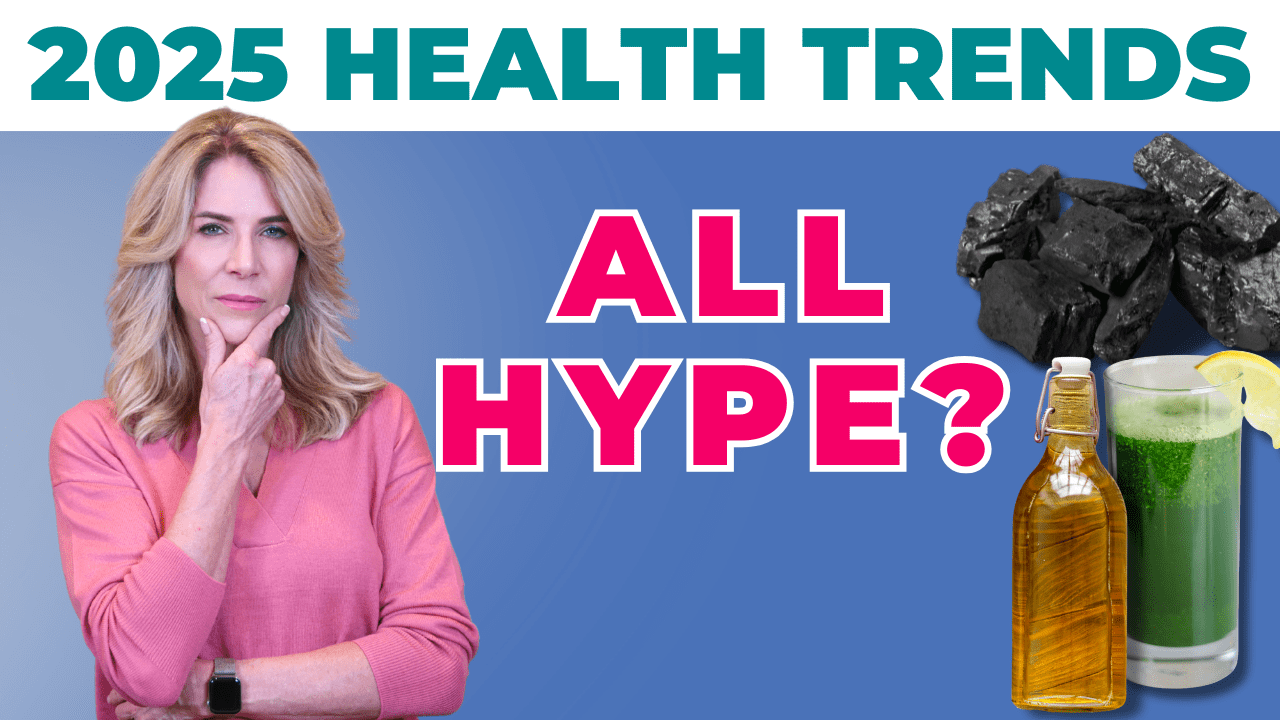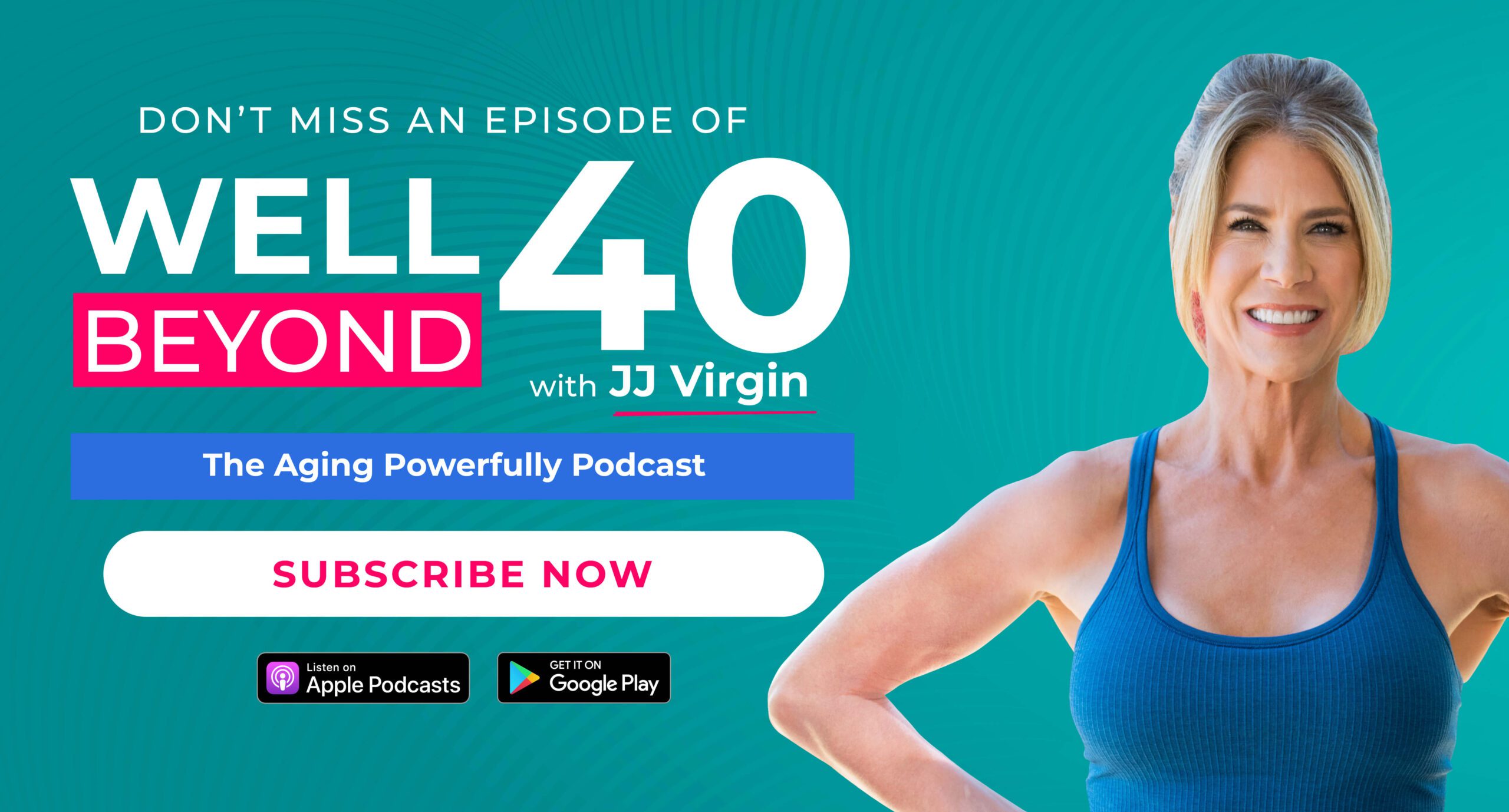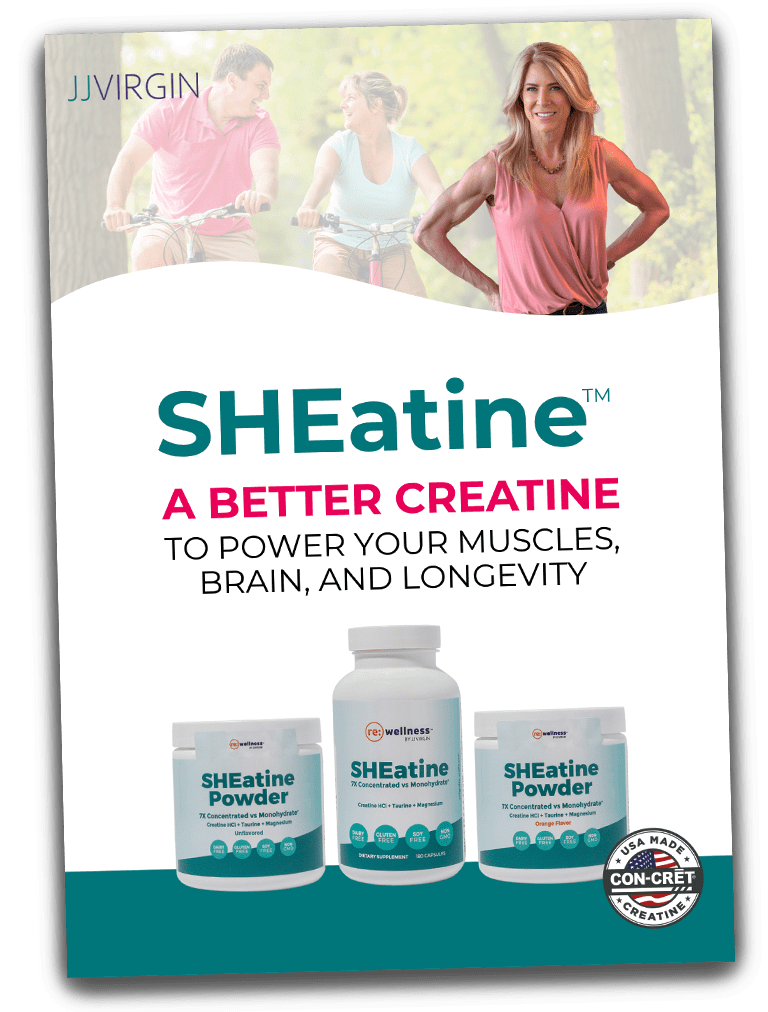The Truth About Body Fat Every Woman Over 40 Needs to Know
After decades in the health industry, I’m on a mission to get rid of traditional scales. Here’s why: We’ve been focusing on the wrong metric for far too long, and it’s doing real metabolic damage, especially to women over 40. In this episode, I’m diving into everything I’ve learned about body composition through my doctoral studies and 30+ years of experience working with thousands of women.
The truth is, muscle is your organ of longevity, and starting around age 30, we can lose up to 1% of our muscle mass each year – that loss doubles after 60. But here’s what I’ve discovered: when you shift your focus from weight loss to body recomposition, everything changes. I’m sharing my exact protocol for measuring what really matters (hint: it’s not the number on your scale), including the specific tools I use at home and the professional assessments that give you the complete picture. Plus, I’ll reveal how my husband dropped 27 pounds of fat while gaining 24 pounds of muscle in just 8 months using these strategies.
What you’ll learn:
- Why women can handle 18-25% body fat and stay metabolically healthy (and why that’s actually good news)
- The dangerous type of fat you need to watch (it’s not where you think) and how to measure it at home
- How to know if you’re losing muscle or fat when the scale goes down – and the simple morning test that tells you
- The exact body composition measurements that predict longevity better than weight
- My personal DEXA scan results and why they differ 5% from my home measurements (and why that’s okay)
- The optimal rate of fat loss that preserves muscle (spoiler: it’s slower than you think)
- Why “newbie gains” can help you build muscle faster if you’re just starting resistance training
- The cutting-edge bone density test that revealed issues my DEXA scans missed for years
Love the Podcast? Here’s what to do:
Make My Day & Share Your Thoughts!
- Subscribe to the podcast & leave me a review
- Text a screenshot to 813-565-2627
- Expect a personal reply because your voice is so important to me.
Join 55,000+ followers who make this podcast thrive.
Want to listen to the show completely ad-free?
- Go to subscribetojj.com
- Enjoy the VIP experience for just $4.99/month or $49.99/year (save 17%!)
- Click “TRY FREE” and start your ad-free journey today!
Resources Mentioned in this episode
Reignite Wellness™ Magnesium Body Calm
Episode Sponsors:
Try Qualia risk free for up to 100 days and code VIRGINWELLNESS for an additional 15% off
792_YT
===
[00:00:00] JJ Virgin: There’s a lot of myths out there about body fat and body composition, and in this video we’re gonna debunk ’em all body fat is not bad. Here’s actually the reality. You are better off having more body fat and more muscle than being lean and under muscle. Yes, it’s true. And in, in women’s case, this is not for men, but in women’s case, we actually can handle higher levels of body fat and still stay metabolically healthy.
[00:00:28] JJ Virgin: Now I’m saying that, but I’m betting you don’t really want to be there. So let’s talk about what body fat you need to have and then, which you probably want to get rid of. So women have 10 to 15% essential fat on their body, mentally of three to 5%. By the way, we have more body fat just to begin with. Then we tend to store more body fat, especially in our younger years because of estrogen in our thighs and our butt.
[00:00:57] JJ Virgin: Now that’s not dangerous. Fat. Fat becomes problematic when it starts to shift and we start to store more in visceral adipose tissue around our organs. That’s the more damaging, metabolically active, problematic fat. So part of this whole thing with body fat is where’s that body fat located? If you have a lot of fat on your thigh and your bum.
[00:01:19] JJ Virgin: Not a big deal, but if you’ve got a lot of visceral adipose tissue, it’s a problem. So where should you be? And again, I’m gonna focus first on you want to have more fat free mass, more skeletal muscle mass, and that’s the more important number for you to focus on. But in terms of overall body fat, when I was in grad school, actually, when I was in doctoral school, we had a whole.
[00:01:40] JJ Virgin: Semester where all we focused on was body composition, all the different ways that you could test for it and what the ideal ranges were. And what is kind of weird now is that what we were taught back then as the healthy ideals has changed dramatically nowadays. And I liken that to lab testing. You know how in lab testing you’re looking at the average lab metrics and they’re compared to the general population who we now know, only about 7% are metabolically healthy.
[00:02:08] JJ Virgin: Well, if you’ve got 80% of the population now who’s overweight or obese with more obese than just overweight, how do we really look at what’s healthy in terms of body fat and body composition? So first thing I’m gonna maintain is that fat-free mass matters the most. Then where that fat is located, that visceral adipose tissue, you want that to be 10% of your overall body fat.
[00:02:31] JJ Virgin: Or less, and you really want that number to be as close to zero as possible, and it actually can be very, very close to zero. Then for your overall body fat. What I was taught for norms for women was that women would be 18 to 22% was ideal, maybe up to 25%. Now I’m hearing that really we can be all the way up to 30% before problems start, but I would still say for us, I think we’re better off in that 18 to 25% range as the optimal ideal range.
[00:03:02] JJ Virgin: If you’re a curvier person, a curvier gal, maybe you’re better off at the 25%. If you’re more of a lean, athletic build, then you’re better off at the lower place. But again, the most important metric there is not going to be body fat. It’s that fat free mass. I am on a mission to get rid of the traditional scale.
[00:03:20] JJ Virgin: I think we have done so much metabolic damage to women because we have focused for so long on the wrong thing. We’ve been watching weight, rather than focusing on what that weight is made up of. Here’s the reality. If you wanna lose a lot of weight. The best way to do it is to starve yourself and sit on the couch because you’ll lose a lot of weight, but it’ll be a lot of muscle.
[00:03:41] JJ Virgin: You’ve all heard that muscle weighs more than fat, that it’s heavier, but it’s also denser and it holds everything in tighter. So again, if you’re really focusing on losing weight and you wanna lose weight fast, then you’re gonna be losing muscle. And we know this to be true, that when you look at most weight loss programs out there, 25 to 40% of what you lose.
[00:04:01] JJ Virgin: Is skeletal muscle is fat free mass. Now, put that together with the fact that starting around age 30, we can lose up to 1% of our muscle mass a year. The average is three to 8% each decade, and that starts to double at age 60. And then you really look at what Dr. Gabrielle LY says, which is muscles, the organ of longevity, that muscles really what we need to live a powerful aging life.
[00:04:24] JJ Virgin: The worst thing that you could do. Is lose muscle. So the most important thing we need to do is use a different way. Look at body composition, look at what your weight’s made up of rather than just your weight alone. And focus on doing everything you possibly can, not just to hold onto muscle, but to build muscle and then lose body fat, but always think muscle first.
[00:04:47] JJ Virgin: So when you stand on traditional scale, you get your weight. But body compositions can unpack what that weight’s made up of because. Just knowing your weight is kind of like just knowing your total cholesterol doesn’t give you any kind of information. Body composition is gonna unpack what that weight is made up of.
[00:05:05] JJ Virgin: There’s two major components and then we’re gonna get a little bit more granular. There is fat mass and there is everything else known as fat free mass. Now. In fat mass. We are concerned with overall fat, but we are way more concerned with where that fat is, and again, that visceral adipose tissue being the dangerous fat.
[00:05:26] JJ Virgin: At some point, hopefully soon, we’ll also be able to look at. Intramuscular fat, that’s that fatty infiltrate in the muscles right now. We don’t have a way to really see that, so for now we’re looking at overall fat and then your visceral adipose tissue as the big key indicator of problem. Then we have fat-free mass.
[00:05:44] JJ Virgin: Fat-free mass, again is everything else. It’s your organs, it’s your bones, it’s your muscles, and it’s both your smooth and your skeletal muscles. Now, the big thing that we can affect in that category obviously is skeletal muscle mass. When we’re really watching our fat-free mass index change our fat-free mass change, what we’re really seeing is an improvement in our skeletal muscle mass.
[00:06:08] JJ Virgin: When you’re doing this at home, you’re probably using something called a bio-impedance scale. Now, a bio-impedance scale, what it does is it sends a wave up your body and it checks the resistance to it. That resistance. Is fat. The more fat, the more resistance, the less fat, the less resistance. And what it’s going to do is it’s going to give you an estimate of something called your total body water.
[00:06:33] JJ Virgin: Now, the more muscle you have, the more total body water you have, because that’s where we’re gonna take water and carbohydrates and serums. Glycogen or muscle. So higher body water, higher skeletal muscle mass. And that is the equation that the, the machine will give you total body water and then make a.
[00:06:50] JJ Virgin: Guesstimate, right of your skeletal muscle mass. So you may initially, let’s say that you step on a scale after doing a very low carb diet for a week. It might look like you lost muscle because you dehydrated yourself and you lost glycogen in your muscles. So you have to know what you’re looking at. You want to keep your conditions the same When you’re doing these things, the same amount of hydration, the same amount of carbohydrates weighing in at the same time each day, preferably in the morning.
[00:07:18] JJ Virgin: You wake up, you go to the bathroom, then you do this. And then what you’re gonna look at with this ed machine in the total body water is you’re gonna look at the trend over time. So you, it’s gonna bounce each day because again, it’s based on hydration. And then what you’ll do is you’ll look at the end of the week and you’ll look at the trend.
[00:07:34] JJ Virgin: And what you want to see is you want to see that your total body water is going up. And that your weight is going down. If that is happening, that shows that you’re holding onto or building muscle while you’re losing body fat. And the machine will also tell you, oh, you’ve lost some body fat. Now, it will also give you your visceral adipose tissue, but it’s also guessing this, the best way to really identify that is.
[00:07:58] JJ Virgin: Both with a D of Body scan where it really gives you a picture of where your fat is right and where your muscle is and how much muscle you have. And then what you can do at home is you can use a tape measure and I like to use a Bluetooth tape measure. There’s one called re info, R-E-N-P-H-O. We’ll put the info in the show notes.
[00:08:17] JJ Virgin: And what’s cool about this is that it is a Bluetooth feature. It reports to your phone and you can track your trends. All you need to do is once a week do a waist to hip. Ratio. So you’re gonna do a waist ratio, a waist measurement, a hip measurement, and then you look at two things. What’s my waist to height ratio?
[00:08:33] JJ Virgin: ’cause you want your waist to be half of the, uh, measurement of your height or less. So if you’re 72 inches tall, that means you’re 36 inches or less on your waist and then a waist to hip. And as a woman, you want your waist to hip ratio to be 0.8 or less. And if, if it’s a man. One or less. So that’s the way you can really track that visceral adipose tissue at home is through a simple waist and hip measurement.
[00:08:59] JJ Virgin: So muscle changes everything. When you really look at your overall health, number one muscle has a dramatic impact on your metabolism. Now, it’s not dramatic in that you put on a pound of muscle and boom, all these crazy things happen. It’s dramatic in the shifts that it can make over time. Muscle is your metabolic span.
[00:09:17] JJ Virgin: It holds everything in tighter. And every pound of muscle that you put on means about 10 more calories a day that you’re spending through your metabolism. Doesn’t sound like much. It totally adds up. Muscle also is a sugar sponge. So when you’re eating those carbohydrates, the muscle sucks ’em in so that they can be stored as fuel for later known as glycogen.
[00:09:37] JJ Virgin: And then muscle is also this cool multitasking messenger where it’s every time it contracts, it gives messages to your body, burn fat, lower inflammation, my immune system. So it does all these amazing things, not just for your metabolism, but also for your longevity. So the big buzz right now is body recomposition.
[00:09:58] JJ Virgin: What does that mean? That means that you are not just losing weight, that you are focusing on holding onto a better yet building muscle as you’re losing body fat now. Here’s how you’re gonna want to think about this because this is a slow process. I will tell you that recomp in your body is a little bit like watching grass grow.
[00:10:18] JJ Virgin: If you’re doing this correctly, if you try to do it too fast, you’ll end up losing muscle. If you wanna recomp your body, basically you are gonna want to think about losing about a half. To a percent of weight a week because that’s about as much body fat as you’ll be able to lose. So slow go on the loss.
[00:10:36] JJ Virgin: And again, you’re matching this with your bio-impedance machine to watch your total body water to make sure that it is staying the same or going up as you’re losing weight. And then for muscle mass. Now it’s different if you’ve never lifted weights before, because there’s this phenomenon called newbie games where it’s a little easier for you to put on muscle as you start.
[00:10:55] JJ Virgin: But if you’ve been lifting weights for a while, you know, a half pound to a pound of muscle a month would be really, really good. I’ve got some tricks in my sleeve to help you get more, and I’ll share those in a moment. But that’s where you want to think of. I will tell you that my husband was able to drop 27 pounds.
[00:11:09] JJ Virgin: Fat and put on 24 pounds of muscle in eight months. But we did that by optimizing his testosterone, cranking up his protein, making sure he was taking his, his, she, he takes shein, right? We just cover the s It’s his heine, his creatine, HCL with trine and magnesium. So we did all the things that would help him really optimize and he’d never really pushed like he was pushing before, but think about more likely that you may be losing.
[00:11:35] JJ Virgin: You know, a pound of fat a week and putting on a pound of muscle a month. And so while it looks like it’s a slow shift, it will be a dramatic change in how you feel and what you look like, especially naked. So I talked earlier about how to measure body composition, but I just want to share how I like to do this using a DEXA scan.
[00:11:56] JJ Virgin: Now, a DEXA scan is. Right now considered the gold standard for doing this, and what I love about AD DEXA scan is that they’re readily accessible now and they’ve come down a lot in price. So you probably will be able to do this for about a hundred bucks. I know there’s a, a gym and fitness center near my house where we do them every six to 12 months and they’re, I think it’s 75 bucks or a hundred bucks.
[00:12:18] JJ Virgin: And then they have all my records and we just compare. When you do a DEXA scan, it takes about 10 minutes. You want to make sure that you go to the same place. With the same provider under the same circumstances. I recently heard a podcast where someone was talking about going and doing some carb loading and before a DEXA scan.
[00:12:36] JJ Virgin: I’m like, well, that’s just gonna throw off the results. You wanna keep the conditions always the same and the machine the same as well. When you do a DEXA scan, what it’s going to do is it, it’s going to take basically a low, low, low dose of radiation. It’s gonna scan your body and it’s going to give you your bone mineral density.
[00:12:56] JJ Virgin: It’s going to give your, you your skeletal muscle mass in each area, so your arms, your legs, you’ll be able to see if you’re, you’re even, and it’s gonna give you your body fat. It’s gonna show you where that body fat is. You might think you know, but it’s gonna show you for sure where it is. And then it’s gonna give you some norms so that you can compare what’s called your apendicular lean Mass index to people your age.
[00:13:16] JJ Virgin: You want to be at the 25th percentile or higher for your age, right? You wanna be the best. It’s also going to give you, um, your TNZ scores, so you can identify osteoporosis or osteopenia, and then it’s gonna give you your visceral adipose tissue so you can make sure that your visceral adipose tissue is 10% or less of your overall body fat.
[00:13:37] JJ Virgin: Now obviously you’re not doing that all the time, and you wouldn’t want to when you go to do your DEXA scan that day, that same morning, get up and do your bio-impedance, and then you’re going to corroborate the results because I have a very expensive bio-impedance machine at home. That’s segmental and it’s still a couple percentage off from what the DEXA scan says for me.
[00:13:58] JJ Virgin: In fact, it’s 5% off, so I know that to be true, and so I just use the one at home to monitor changes. But I know my absolute number is gonna come from the DEXA. There’s actually a new technology out here for the bone mineral density and quality of bone scores, and so there’s, while I love the DEXA for the ease of use and where it’s at, if you’re really looking for your bone health, I want you to go a step further and find something called the echo light REMS testing.
[00:14:29] JJ Virgin: I recently had this done. And now I’m on a mission to get everybody to understand this for, for bone health because it goes beyond just bone mineral density and it looks at bone architecture and bone quality, and it gives you not just a T score and zco for osteopenia and osteoporosis, but it gives you a five year fracture risk.
[00:14:48] JJ Virgin: And it shows you exactly where that fracture risk is. Is it in your back, is it in your hips? Like pretty amazing stuff. And there’s no radiation at all with this. This hopefully will become a technology that’s gonna get more and more out there. Um, but I will tell you, I, I’ve been checking bone mar density for years because I took a medication in my twenties that put me at risk for osteoporosis.
[00:15:09] JJ Virgin: And even though I do all the things, um. You know, I knew that that medication had kind of a big devastating effect. I was fine on my DEXA scans, always have been. I was not fine on the echo light REM scan. And so it just shows you that there’s more to this to look at. It’s, it’s why we don’t just look at a weight, we look at what the weight’s made up of, and we don’t just look at bone mineral density.
[00:15:31] JJ Virgin: We need to look at architecture and quality too. So that’s just a little aside. But that’s what I want you to just be aware of, and hopefully this technology will get out there way more. But for you, what you’re gonna make sure you’re doing is. Look for that DEXA, get it done once a year. Correlate it with what’s going on with your bio-impedance machine at home, and then also once a week do your waist and hip measurements so you can really ensure that you are.
[00:15:52] JJ Virgin: I always say if you’re losing weight but not losing your waist, you’re making yourself worse, not better. I’m on a mission to help you age powerfully, and I don’t want you to miss out, so be sure to subscribe to the channel and leave a comment. I want to hear what you took away from this video. I’ll see you in the next video.
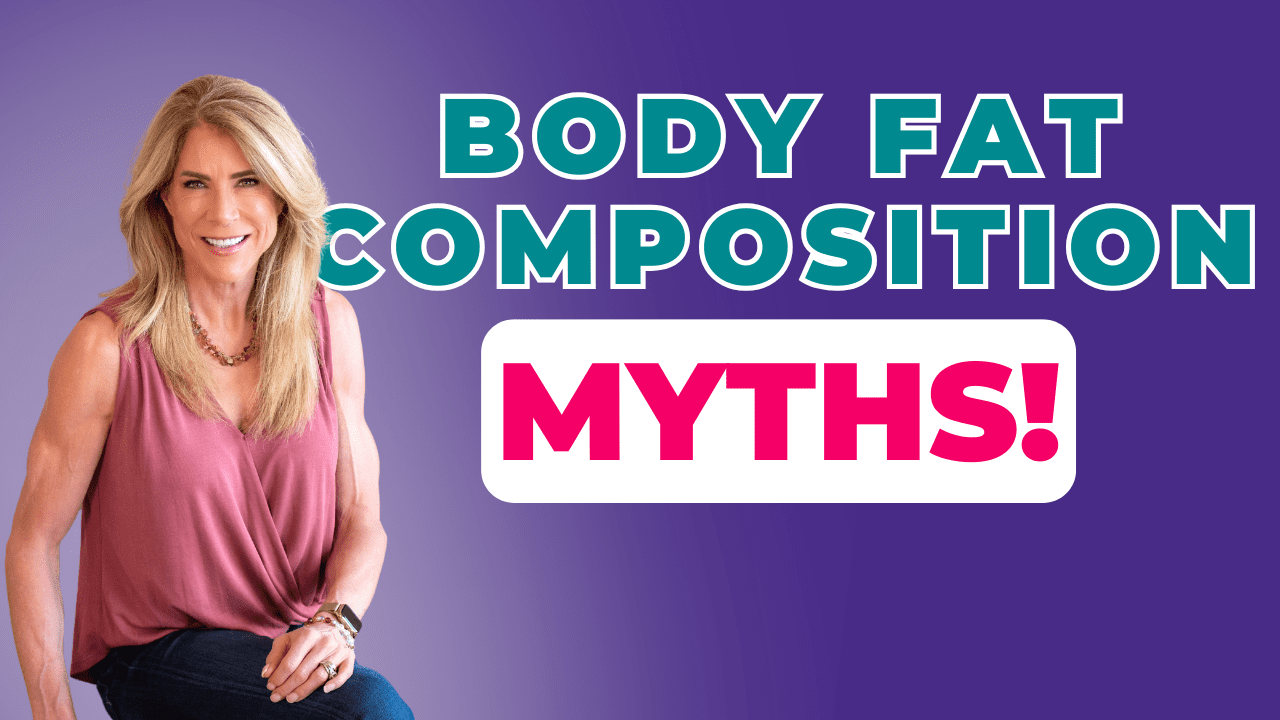
 Subscribe to our show
Subscribe to our show 